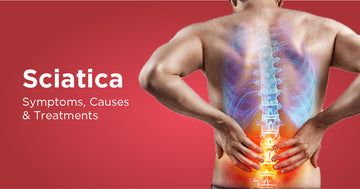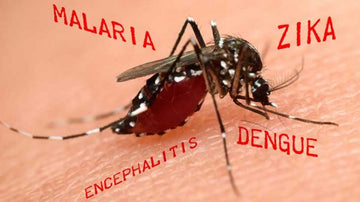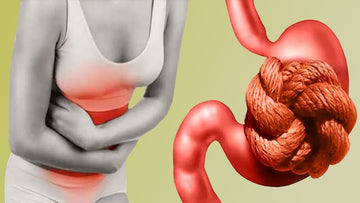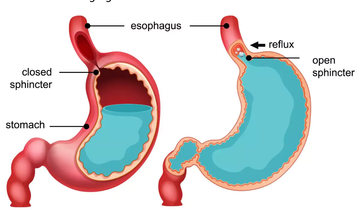
Sciatica refers to pain that radiates along the path of the sciatic nerve, which extends from the lower back through the hips and buttocks and down each leg. It’s commonly caused by a herniated disk, bone spur, or spinal stenosis compressing part of the nerve. This results in inflammation, pain, and often some numbness in the affected leg.
DrVaid Ji Nerve Plus Tablet is very Effective in Curing the Symptoms and Pain of Sciatica. Nerve up tablet help in balancing the vata doshas and kapha dosha. It acts as nervine stimulant. It shows effective results in improving the central nervous system. It contains natural ingredients like shudha kuchala, shudha shilajeet, praval pishti, shankh bhasma etc. This tablet helps in Backache, kneepain, Sciatica and all the Problem related to Nerves.

Guggulu (Commiphora mukul): Helps in reducing inflammation and pain.
Rasna (Pluchea lanceolata): Used for its pain-relieving and anti-inflammatory effects.
Shallaki (Boswellia serrata): Effective in reducing inflammation and pain.
Nirgundi (Vitex negundo): Used for its anti-inflammatory and analgesic properties.
Dashamoola: A combination of ten roots that is effective in reducing pain and inflammation.
Kati Basti: A localized treatment where warm medicated oil is held on the lower back using a dough ring, providing relief from pain and inflammation.
Basti (Medicated Enema): A key treatment for Vata disorders, it involves administering medicated oil or decoction enema to cleanse and balance the Vata dosha.
Snehana (Oleation Therapy): Internal and external oleation helps in lubricating the body channels and reducing Vata imbalance.
Swedana (Sudation Therapy): Steam therapy to induce sweating and help in relieving muscle stiffness and pain.
2. Turmeric Milk: Drink a glass of warm milk with a teaspoon of turmeric powder to reduce inflammation.
3. Garlic: Consuming garlic cloves can help in reducing pain and inflammation due to its anti-inflammatory properties.
4. Ginger Tea: Drink ginger tea regularly for its anti-inflammatory benefits.
5. Fenugreek Seeds: Make a paste of fenugreek seeds and apply it to the affected area to reduce pain and swelling.
6. Mustard Oil Massage: Massage the affected area with warm mustard oil to improve blood circulation and reduce pain.
7. Epsom Salt Bath: Take a warm bath with Epsom salt to relax muscles and reduce pain.
8. Stretching Exercises: Gentle stretching exercises can help in relieving tension in the sciatic nerve.
9. Yoga: Specific yoga poses like Bhujangasana (Cobra Pose) and Setu Bandhasana (Bridge Pose) can help in relieving sciatica pain.
10. Proper Posture: Maintain proper posture while sitting and standing to reduce strain on the sciatic nerve.
2. Healthy Diet: Follow a diet that balances the Vata dosha, including warm, cooked foods with healthy fats.
3. Stay Hydrated: Drink plenty of water to keep the body hydrated and support muscle function.
4. Proper Sleep: Ensure you get adequate sleep and maintain a comfortable sleeping position.
5. Stress Management: Practice stress-relieving techniques like meditation and deep breathing exercises.
1. Abhyanga (Oil Massage): Full-body massage with warm herbal oils to improve circulation and reduce Vata imbalance.
2. Swedana (Steam Therapy): Induces sweating to release toxins and relieve muscle stiffness.
3. Virechana (Purgation): Detoxifies the body by cleansing the digestive tract.
4. Basti (Medicated Enema): Administers herbal decoctions or oils to cleanse and balance the Vata dosha, especially effective for lower back and leg pain.
5. Kati Basti: A localized treatment where warm medicated oil is held on the lower back to reduce pain and inflammation.
Consulting with an Ayurvedic practitioner is crucial for a personalized treatment plan, ensuring the best approach for your specific condition.
Ayurvedic Perspective on Sciatica
In Ayurveda, sciatica is known as “Gridhrasi,” and it’s associated with an imbalance in the Vata dosha. Ayurveda offers a holistic approach to managing sciatica through herbal medicines, dietary changes, lifestyle modifications, and Panchakarma treatments.DrVaid Ji Nerve Plus Tablet is very Effective in Curing the Symptoms and Pain of Sciatica. Nerve up tablet help in balancing the vata doshas and kapha dosha. It acts as nervine stimulant. It shows effective results in improving the central nervous system. It contains natural ingredients like shudha kuchala, shudha shilajeet, praval pishti, shankh bhasma etc. This tablet helps in Backache, kneepain, Sciatica and all the Problem related to Nerves.

1. Herbal Remedies:
Ashwagandha (Withania somnifera): Known for its anti-inflammatory and muscle-relaxant properties.Guggulu (Commiphora mukul): Helps in reducing inflammation and pain.
Rasna (Pluchea lanceolata): Used for its pain-relieving and anti-inflammatory effects.
Shallaki (Boswellia serrata): Effective in reducing inflammation and pain.
Nirgundi (Vitex negundo): Used for its anti-inflammatory and analgesic properties.
Dashamoola: A combination of ten roots that is effective in reducing pain and inflammation.
2. External Therapies:
Abhyanga (Oil Massage): Massaging with warm herbal oils like Mahanarayan oil or Bala oil can help in reducing pain and stiffness.Kati Basti: A localized treatment where warm medicated oil is held on the lower back using a dough ring, providing relief from pain and inflammation.
3. Panchakarma Treatments:
Virechana (Purgation Therapy): Helps in detoxifying the body and balancing the Vata dosha.Basti (Medicated Enema): A key treatment for Vata disorders, it involves administering medicated oil or decoction enema to cleanse and balance the Vata dosha.
Snehana (Oleation Therapy): Internal and external oleation helps in lubricating the body channels and reducing Vata imbalance.
Swedana (Sudation Therapy): Steam therapy to induce sweating and help in relieving muscle stiffness and pain.
Home Remedies for Sciatica Pain
1. Hot and Cold Compresses: Alternate between hot and cold compresses on the affected area to reduce pain and inflammation.2. Turmeric Milk: Drink a glass of warm milk with a teaspoon of turmeric powder to reduce inflammation.
3. Garlic: Consuming garlic cloves can help in reducing pain and inflammation due to its anti-inflammatory properties.
4. Ginger Tea: Drink ginger tea regularly for its anti-inflammatory benefits.
5. Fenugreek Seeds: Make a paste of fenugreek seeds and apply it to the affected area to reduce pain and swelling.
6. Mustard Oil Massage: Massage the affected area with warm mustard oil to improve blood circulation and reduce pain.
7. Epsom Salt Bath: Take a warm bath with Epsom salt to relax muscles and reduce pain.
8. Stretching Exercises: Gentle stretching exercises can help in relieving tension in the sciatic nerve.
9. Yoga: Specific yoga poses like Bhujangasana (Cobra Pose) and Setu Bandhasana (Bridge Pose) can help in relieving sciatica pain.
10. Proper Posture: Maintain proper posture while sitting and standing to reduce strain on the sciatic nerve.
Lifestyle Changes
1. Regular Exercise: Engage in low-impact exercises like walking, swimming, and yoga to keep the muscles strong and flexible.2. Healthy Diet: Follow a diet that balances the Vata dosha, including warm, cooked foods with healthy fats.
3. Stay Hydrated: Drink plenty of water to keep the body hydrated and support muscle function.
4. Proper Sleep: Ensure you get adequate sleep and maintain a comfortable sleeping position.
5. Stress Management: Practice stress-relieving techniques like meditation and deep breathing exercises.
Panchakarma Treatment for Sciatica
Panchakarma, a comprehensive detoxification process, can be highly effective in treating sciatica. Here are the key components of Panchakarma for sciatica:1. Abhyanga (Oil Massage): Full-body massage with warm herbal oils to improve circulation and reduce Vata imbalance.
2. Swedana (Steam Therapy): Induces sweating to release toxins and relieve muscle stiffness.
3. Virechana (Purgation): Detoxifies the body by cleansing the digestive tract.
4. Basti (Medicated Enema): Administers herbal decoctions or oils to cleanse and balance the Vata dosha, especially effective for lower back and leg pain.
5. Kati Basti: A localized treatment where warm medicated oil is held on the lower back to reduce pain and inflammation.
Consulting with an Ayurvedic practitioner is crucial for a personalized treatment plan, ensuring the best approach for your specific condition.




